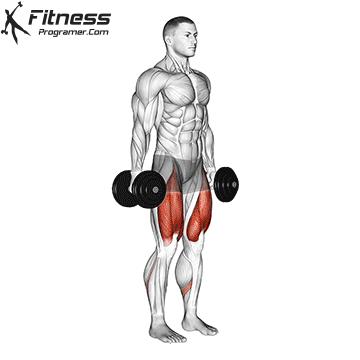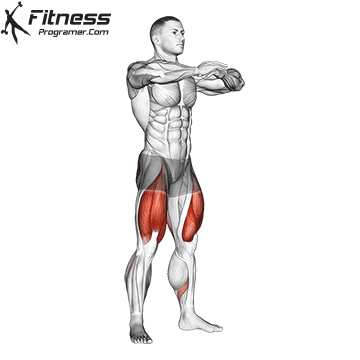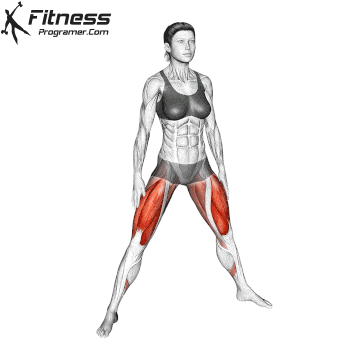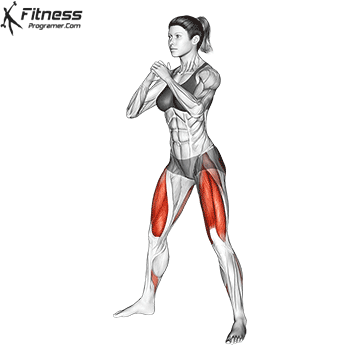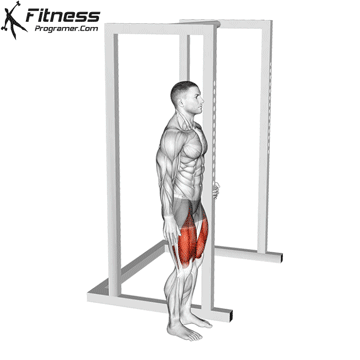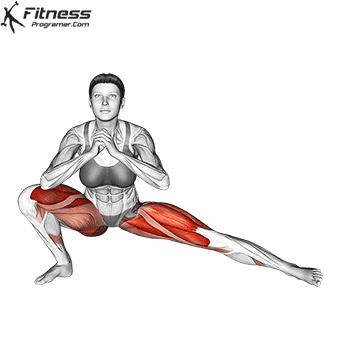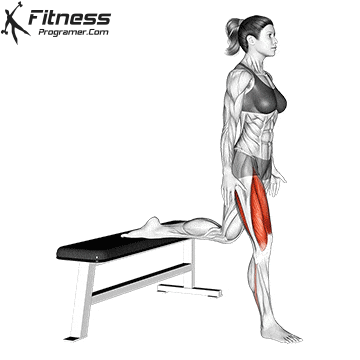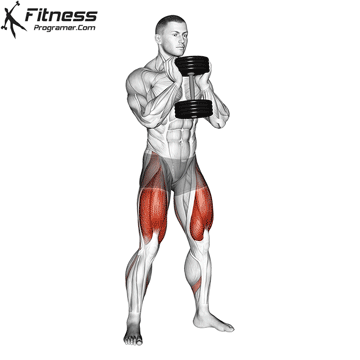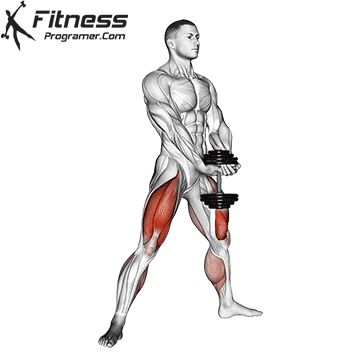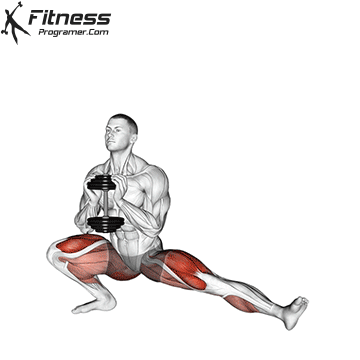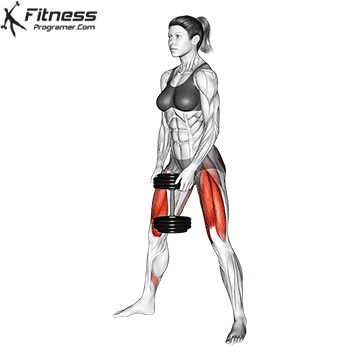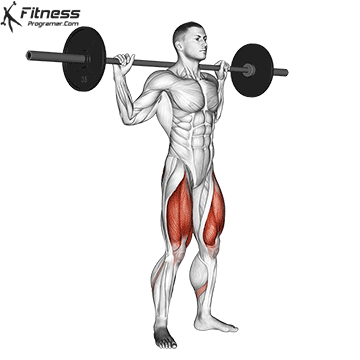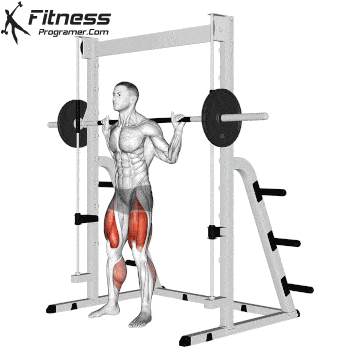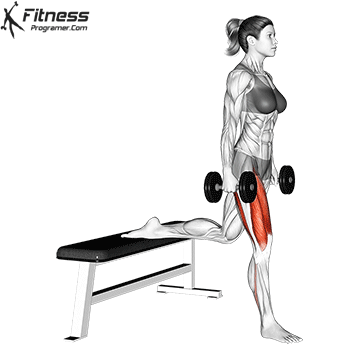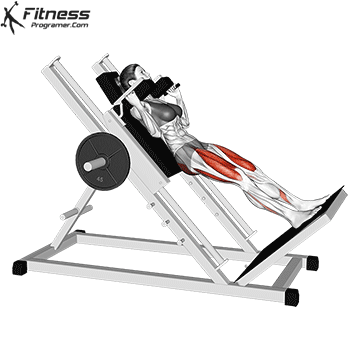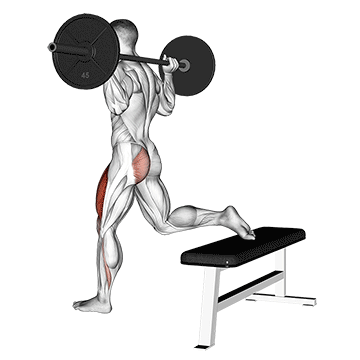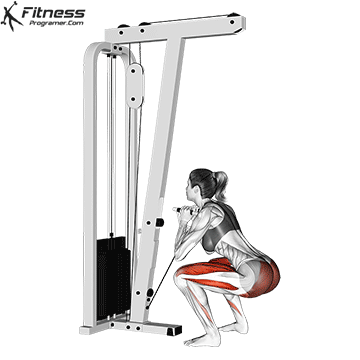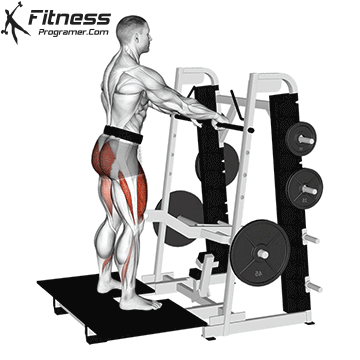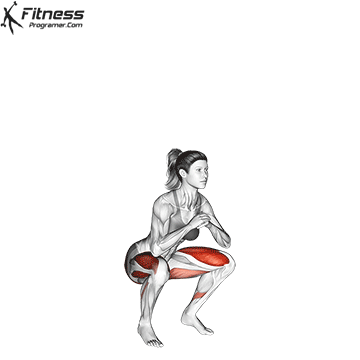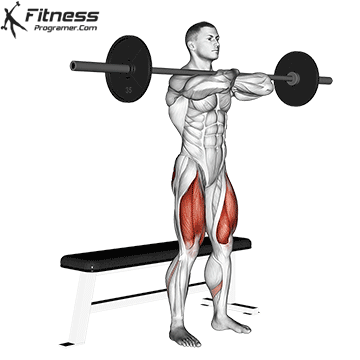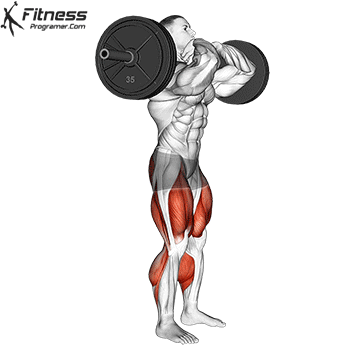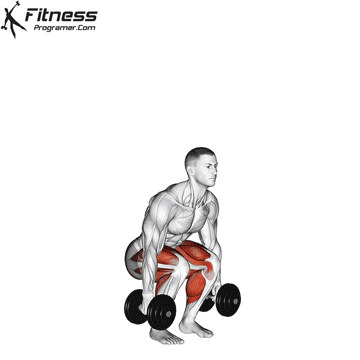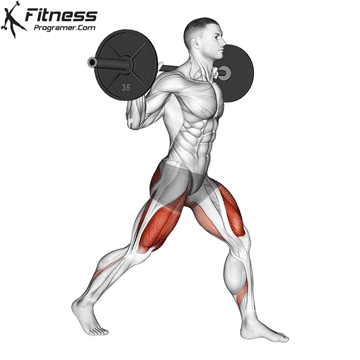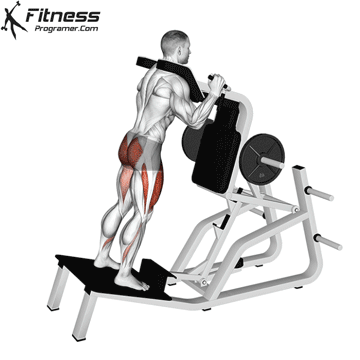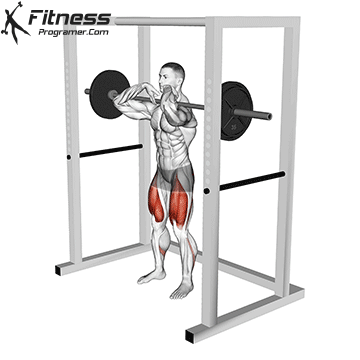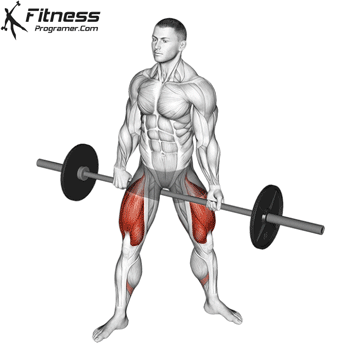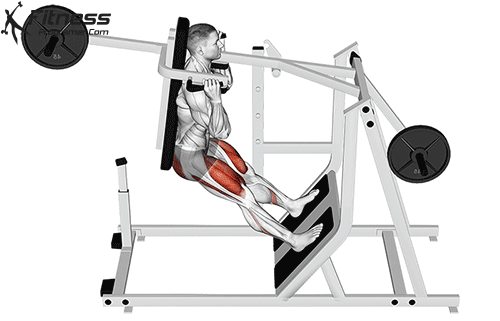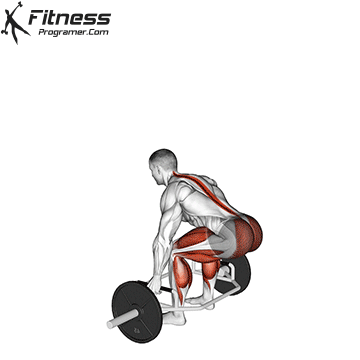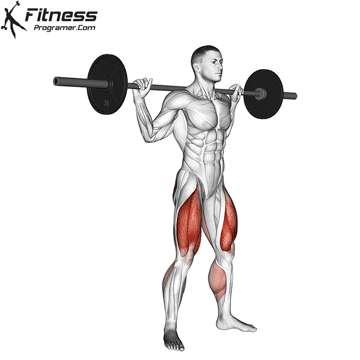Overview
Dumbbell squats are a fundamental strength training exercise that can help you build powerful lower body muscles and improve overall fitness. They are a versatile alternative to barbell squats, offering the advantage of working each leg independently and allowing for a greater range of motion.
How to do perform Dumbbell Squat
- Setup: Stand with your feet shoulder-width apart. You can either hold a dumbbell in each hand at your sides or use a single dumbbell held with both hands in front of your chest (goblet squat style).
- Posture: Keep your chest up and your shoulders back. Maintain a natural arch in your lower back, and engage your core muscles for stability.
- Descent: Begin the movement by pushing your hips back, as if you’re sitting down into a chair. Keep your knees in line with your toes and allow them to bend as you lower yourself. It’s important to maintain a neutral spine throughout the motion.
- Depth: Lower your body until your thighs are at least parallel to the ground, or go deeper if you can without compromising form. Ideally, your thighs should be parallel to the floor or go below parallel for a full range of motion.
- Ascent: Push through your heels and drive your hips forward to stand back up. Keep your back straight as you rise. Exhale as you return to the starting position.
- Repetition: Repeat the squat for the desired number of repetitions.
Tips for Proper Form
Keep your heels on the ground and avoid letting them lift.
Drive your knees out in line with your toes as you descend.
Keep your chest up and shoulders retracted.
Hold the dumbbells securely and avoid excessive swinging.
Control the tempo to maximize muscle engagement.
Common Mistakes
Allowing the knees to cave inward, reducing joint safety.
Leaning too far forward, shifting tension away from the legs.
Using momentum to lift instead of controlled strength.
Not squatting deep enough, which limits effectiveness.
Rounding the back, which increases injury risk.
Benefits of Dumbbell Squat
Dumbbell squats are a highly effective compound exercise that offers a wide range of benefits for your overall fitness and strength. Here are some of the key advantages of incorporating dumbbell squats into your workout routine:
- Lower Body Strength: Dumbbell squats primarily target the muscles in your lower body, including the quadriceps, hamstrings, glutes, and calves. They target major muscle groups, helping you build powerful and well-defined legs.
- Muscle Growth: Dumbbell squats are an excellent exercise for hypertrophy (muscle growth) in the legs and buttocks. As a compound movement, they engage multiple muscle groups simultaneously, leading to greater muscle activation and development.
- Improved Core Strength: To maintain proper form during dumbbell squats, your core muscles, including the abdominals and obliques, must work to stabilize your torso. This helps improve core strength and stability.
- Enhanced Athletic Performance: Strong legs and glutes are essential for various sports and athletic activities. Dumbbell squats can help you jump higher, run faster, and perform explosive movements with greater power.
- Fat Burning: Dumbbell squats are a demanding exercise that burns a significant number of calories due to their compound nature. They can be an effective addition to fat loss programs by increasing your overall energy expenditure.
- Functional Fitness: Squats mimic natural movements like sitting down and standing up. These muscles play a critical role in everyday activities like walking, running, and climbing stairs. Training with dumbbell squats can enhance your mobility, balance, and coordination, contributing to better overall functional fitness.
- Joint Health: Performing squats with proper form can help strengthen the muscles around your knees and hips, which can improve joint stability and reduce the risk of injuries.
- Versatility: Dumbbell squats can be adapted to various fitness levels. You can adjust the weight, reps, and sets to suit your goals, whether you’re a beginner or an experienced lifter.
- Reduced Lower Back Strain: Unlike barbell squats that place a load on the spine, dumbbell squats distribute the weight to your sides. This can be advantageous for individuals with lower back issues, as it reduces spinal compression.
To maximize the benefits of dumbbell squats, it’s essential to use proper form, gradually increase the weight as you progress, and incorporate them into a well-rounded fitness program that includes other strength and cardiovascular exercises.
How to Incorporate Into Your Routine
- For Beginners: Start with 2 to 3 sets of 10 to 12 reps using light dumbbells to master the movement pattern.
- For Hypertrophy: Perform 3 to 4 sets of 8 to 12 reps with moderate to heavy weight, focusing on controlled eccentrics.
- For Strength: Use heavier dumbbells for 4 to 5 sets of 6 to 8 reps, maintaining strong technique and posture.
- For Functional Training: Pair with single-leg work or mobility drills to improve joint coordination and balance.
- For Circuit Training: Include in full-body or lower body circuits for 30 to 45 seconds per set.
- For General Fitness: Incorporate 2 to 3 times weekly for overall leg and core development.
- For Mobility and Recovery: Use lighter weights and slow reps to focus on form and joint range of motion.
Dumbbell Squat Muscles Worked

Frequently Asked Questions
Can I hold the dumbbells differently?
Yes. You can hold them by your sides (suitcase style), in front-racked position, or overhead depending on your goals and shoulder mobility.
Is the dumbbell squat good for beginners?
Absolutely. It allows greater control than a barbell and teaches proper squat form with less risk.
How low should I squat?
Aim for thighs parallel to the ground or lower if flexibility and control allow. Do not compromise form.
Can I use this exercise for weight loss?
Yes. It burns calories and builds lean muscle, making it effective in a fat-loss program when combined with cardio and a healthy diet.

